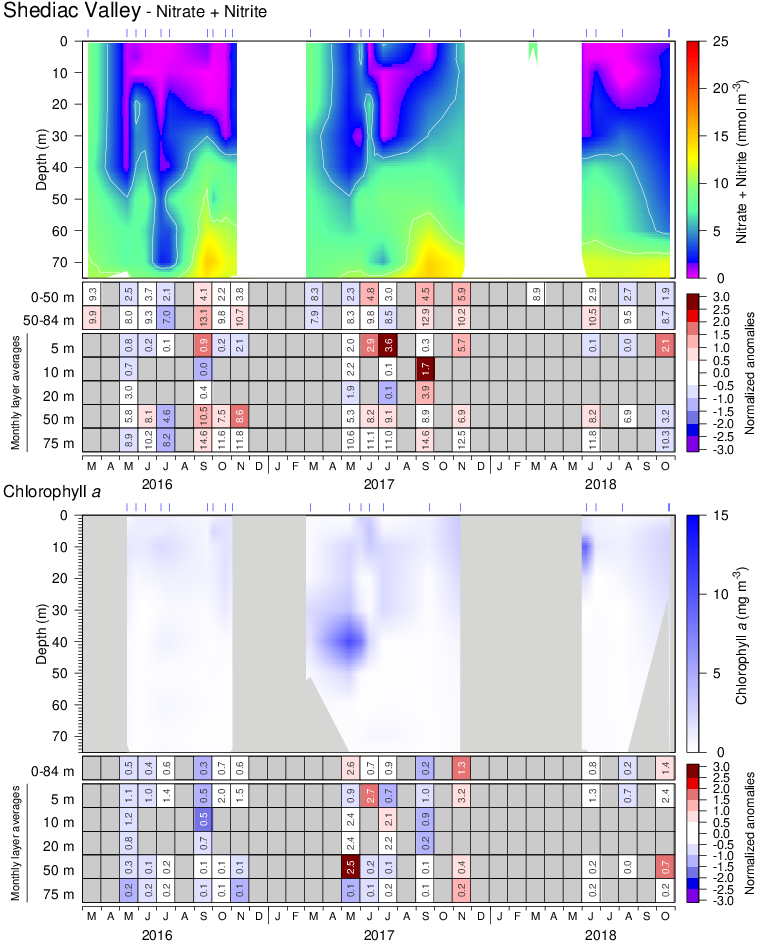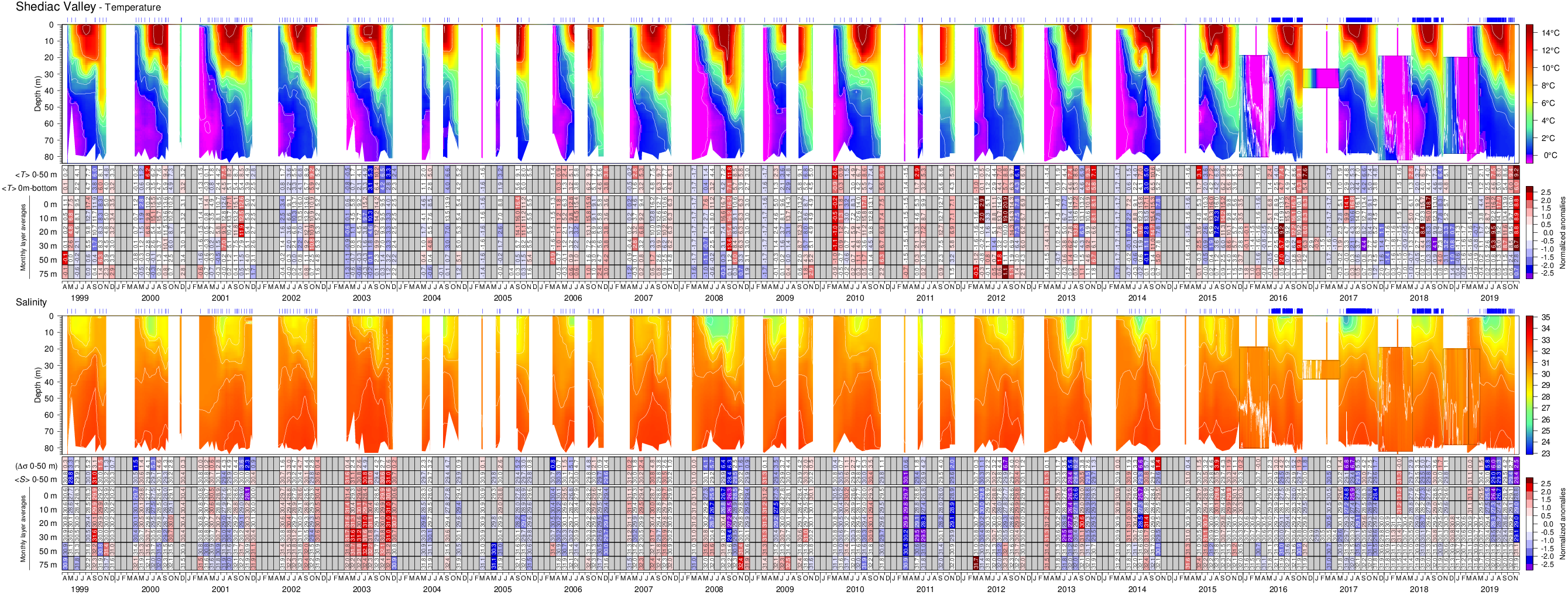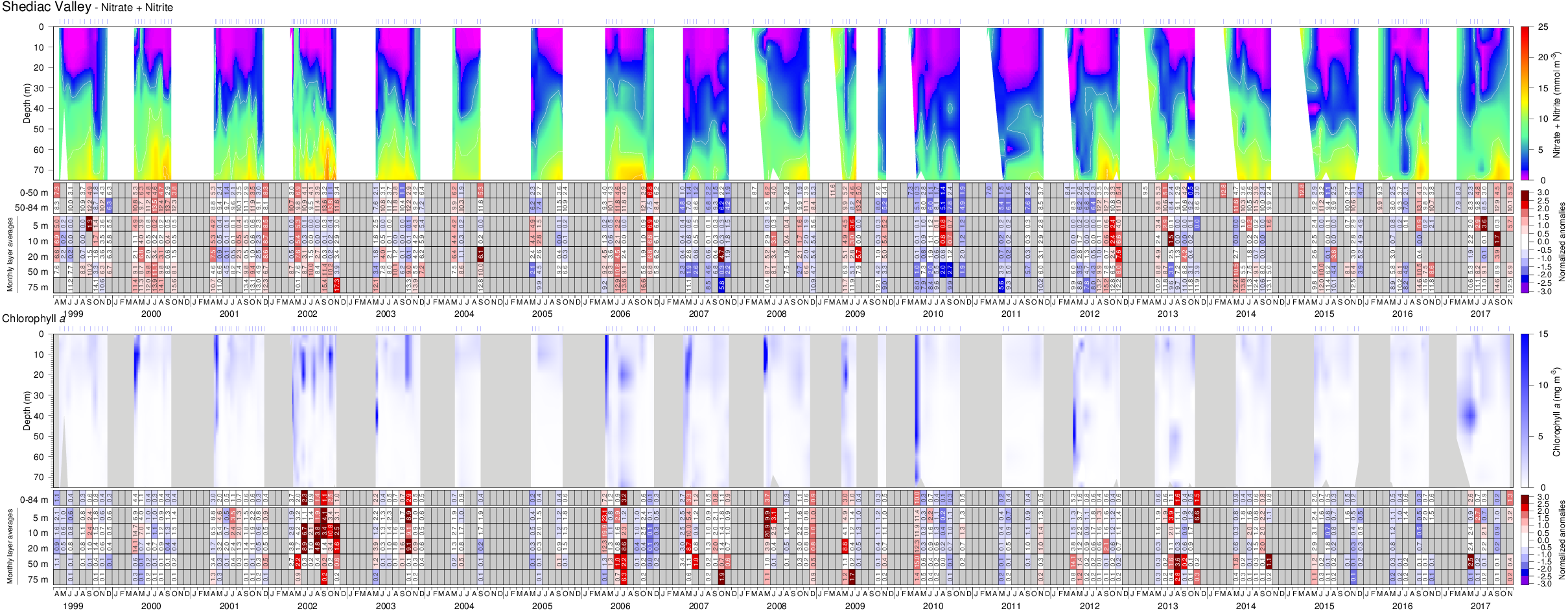AZMP – High Frequency Sampling – Shediac Valley Station
The temporal evolution of four variables measured at Shediac Valley Station is presented for two periods: the last three years, and since monitoring began in 1999.
The following figures show the evolution of the monthly mean values of temperature (°C) and salinity, and of nutrients (nitrate and nitrite; mmol m-3) and chlorophyll a (mg m-3).
The tables show the monthly mean values for:
- Temperature, from the surface to 50 m,
- Temperature, from the surface to bottom,
- Temperatures at various depths, from 0 to 75 m,
- The water density difference (kg/m3), between the surface and 50 m, used to express stratification,
- Salinity, from the surface to 50 m,
- Salinities at various depths, from 0 to 75 m,
- Nutrient concentration from the surface to 50 m, where they are mostly consumed by phytoplankton,
- Nutrient concentration averaged from 50 to 84 m (bottom), zone of the source of the main replenishing stock,
- Nutrient concentrations at various depths, from 5 to 75 m,
- Chlorophyll a concentration in the water column (0-84 m),
- Chlorophyll a concentrations at various depths, from 5 to 75 m.
In the tables, the normalised anomalies show the deviation of the monthly state with respect to a long-term monthly climatology (1991-2020 for physical parameters such as temperature and salinity; 1999-2020 for biochemical parameters such as chlorophyll a and nitrates) and are expressed as colour. The blue expresses negative anomalies, meaning lower water temperature, salinity, nutrients or chlorophyll a concentrations. The red colour expresses positive anomalies, meaning higher water temperature, salinity, nutrient or chlorophyll a concentrations. White boxes indicate conditions close to normal (within plus or minus one-half standard deviation of the long-term climatology, for each month and depth). The variation in the shades of blue or red is proportional to the intensity of the deviation relative to the normal.
Note the summer depletion of the nutrients following the spring phytoplankton bloom, as represented by strong chlorophyll a concentrations.
Shediac Valley High Frequency Sampling Station – Last 3 years






